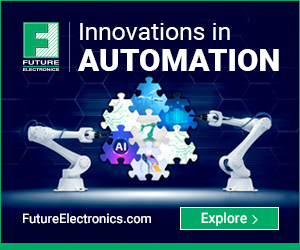IDC: Asia’s Top 1000 Companies to Allocate Over 50% of Their IT Spending on AI Initiatives by 2025
Top AI and Automation Predictions in Asia/Pacific* for 2024 and Beyond Revealed by IDC
SINGAPORE – In a recent FutureScape report, IDC FutureScape: Worldwide Artificial Intelligence and Automation 2024 Predictions — Asia/Pacific (Excluding Japan) Implications, IDC predicts that by 2025, the Asia-based 1000 organizations (A1000) will allocate over 50% of their core IT spend on AI initiatives, leading to a double-digit increase in the rate of product and process innovations.
Artificial intelligence has, especially over the past two to three years, heralded game-changing innovation in both product development and operational processes, driving a fundamental shift in how enterprises function, meet customer needs, and bolster employee productivity. In product innovation and advancement, AI empowers organizations to create and deliver exceptionally customized products and solutions based on customer preference data. IDC finds that 46% of respondents in North America are already investing or exploring potential Generative AI (GenAI) use cases, and that number rises to 70% in Asia/Pacific, and 76% in EMEA (IDC’s Future Enterprise Resiliency and Spending Survey, March 2023)
AI security and compliance are key and center for technology vendors and users. Cloud and software platform providers are weaving GenAI safety measures seamlessly into their offerings, as a collective effort to mitigate IT risks. Here are more AI-driven predictions for 2024 and beyond:
• Enhanced AI Security: By 2026, 70% of cloud and software platform providers in Asia Pacific will bundle GenAI safety and governance packages with their primary services, reducing GenAI risk scenarios by 3 times.
• Global AI Rules Challenge: By 2027, AI regulatory divergence across geographies will create major challenges for A2000 companies, increasing implementation time and effort for sensitive use cases by up to 20%.
Amidst the efforts to improve productivity and employee experience, digital assistants have emerged as the main player. As businesses embark on a quest for knowledge, generative AI and retrieval augmented generation (RAG) can enhance self-service knowledge discovery and decision-making power.
• Digital Assistants’ Popularity. By 2027, GenAI digital assistants will be the UI for 30% of interactions with enterprise software in A1000, including software development, and higher for operating business processes like customer engagement.
• Smart Knowledge Discovery. By 2026, two-thirds of A1000 businesses will leverage a combination of generative AI and RAG to power domain-specific self-service knowledge discovery, improving decision-making by 40%.
As AI technologies continue to evolve and permeate various industries, they hold the promise of unlocking immense economic potential and societal changes. With the potential to optimize processes, streamline operations, and foster innovation, AI is anticipated to drive productivity gains, create new job opportunities, and stimulate economic growth:
• Economic Impacts of AI. By 2028, the overall economic impact of AI will neutralize, as A1000 organizations overcome initial disruption and refocus resources on innovation and new business opportunities, fueling economic expansion.
• Outcome-Driven Automation. After a temporary focus on GenAI, 70% of A1000 enterprises will refocus on mandating automation strategies based on outcomes rather than specific technologies by 2025.
• Business Revolution. By 2025, 10% of A1000 companies will exploit innovative business models to double their monetization potential of generative AI.
• Societal Impacts of AI. By 2028, 10% of A1000 companies will experiment with AGI (artificial general intelligence) (currently speculative) systems that will have a transformative effect on society and create significant opportunities and threats.
Needless to say, strong infrastructure and computing power are critical for AI to work. Looking forward to 2027, a notable inversion is projected in spending patterns on server accelerators compared to server CPUs, marking a transformative shift in the realm of AI hardware.
• Silicon Evolution: By 2027 the spending on server accelerators (GPU, FPGA, DPU, and AI ASICs and ASSPs) compared with server CPUs will invert, achieving a 55/45 rate.
“IDC’s FutureScape predicts that AI and automation technologies will remain central to tech investment initiatives. They are needed to lower operational costs, reduce staffing pressure, revamp end-user experience, and democratize decision-making power. The adaptability and efficiency offered by AI and automation solutions can provide the technologies that can mitigate staff shortage and economic challenges,” says Dr. Lily Phan, Research Director, Intelligent Automation at IDC Asia/Pacific.
Each year, IDC releases its top technology predictions at worldwide, regional and country levels through its IDC FutureScape R eports and gives a crystal ball view of what is ahead for the rapidly changing IT industry. These predictions have been used to shape the strategies and business objectives of technology leaders and business executives in the next 1-5 years. All the predictions stated here cover Asia/Pacific implications.
Catch an on-demand replay of IDC’s 2024 Predictions presentation that will be available as part of a series of FutureScape webinars addressing the IT Industry, AI and Automation, Digital Business, CIO Agenda, and Emerging Technologies. If you would like to attend any of these webinars, register and learn more HERE.











